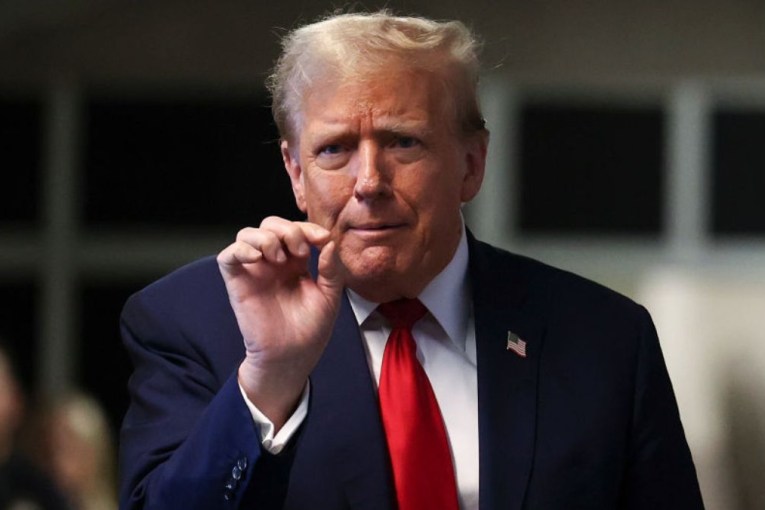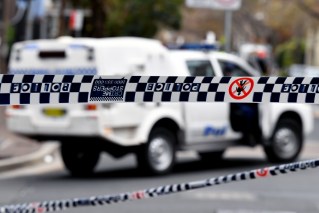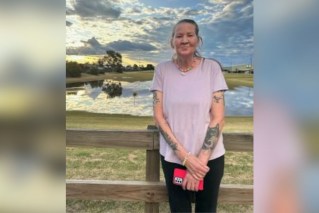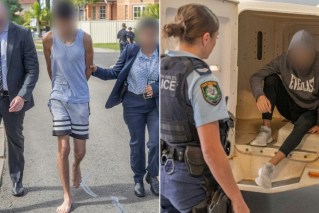Spotlight on hospitals as states and Commonwealth debate opening up Australia

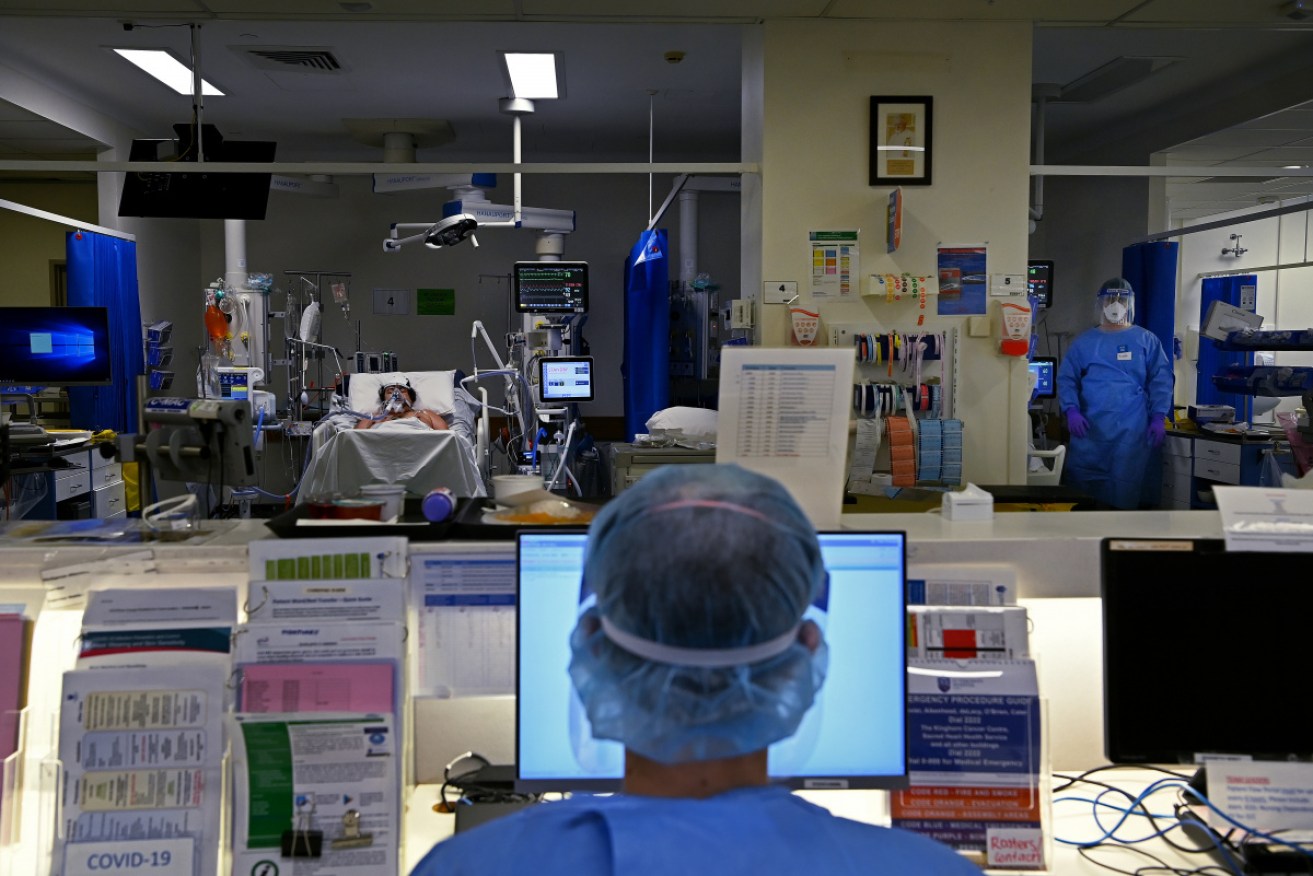
A leading clinician has warned of a “tsunami of cases and hospitalisations” even at 70 per cent double dose vaccination as debate rages about when Australia should open up.
Editor-in-chief of the Medical Journal of Australia Laureate Professor Nick Talley tweeted that 70 per cent coverage will “still not be enough” and that 80 per cent full vaccination of the “entire” population was needed.
“The data I’ve seen from overseas and from recent modelling indicate ~2 weeks after 70% FULLY vaccinated (when they will be protected) will still NOT be enough to prevent a tsunami of cases & hospitalisations,” he wrote.
“Realistically, over 80% of the ENTIRE population need to be vaccinated.”
The data I've seen from overseas and from recent modelling indicate ~2 weeks after 70% FULLY vaccinated (when they will be protected) will still NOT be enough to prevent a tsunami of cases & hospitalisations. Realistically, over 80% of the ENTIRE population need to be vaccinated. https://t.co/Qf7BJ25un8
— MJA Editor in Chief (@MJA_Editor) September 2, 2021
It comes as an agreement between federal and state governments to gradually ease restrictions at 70 and 80 per cent over-16 vaccine coverage continues to fracture and doctors warn of hospitals straining under the case load.
Prime Minister Scott Morrison will chair a national cabinet meeting on Friday that will discuss hospital capacity amid concern the health system will struggle to cope with rising coronavirus cases.
Health Department boss Brendan Murphy has asked intensive care experts from across Australia to provide advice about the pressures higher caseloads could present.
That will be examined by Mr Morrison and his his state and territory counterparts at Friday’s meeting.
Australian Medical Association president Omar Khorshid said emergency departments were already full and elective surgery waiting times too long before the pandemic.
“While national cabinet is considering the cost of expanding intensive care capacity for an expected COVID surge, a funding top-up alone won’t cut it,” he said.
“The Commonwealth will need to address the longer-term public hospital funding crisis.”
Dr Khorshid urged Australia to prepare the health system based on the ability of hospitals to cope with more coronavirus cases before opening up.
On Thursday, NSW Premier Gladys Berejiklian said opening up would mean more people would die, but that Australia had to “sensibly transition to what living with COVID is like”.

Gladys Berejiklian says we have to accept that living with COVID-19 is a reality. Photo: AAP
“We have to get really real about what we are facing, and I know sometimes it is difficult to hear, and I remember specifically the day I said we would never get to COVID zero, but that is the reality,” she said.
“What we need to do is live with COVID normal, and getting to 80 per cent double-dose adult population gets us on our way.”
National cabinet will also consider if healthcare workers who were close contacts should still be sidelined when high vaccination coverage is achieved.
Mr Morrison has indicated vaccinated staff might not have to be furloughed in the future, while Dr Khorshid believes the practice is unsustainable.
There are 184 coronavirus patients in intensive care nationally, with 160 in NSW.
Labor’s health spokesman Mark Butler said national cabinet needed to urgently lock in a plan to bolster hospitals.
“NSW hospitals are at breaking point with much worse yet to come but Scott Morrison still has no plan to guarantee our hospitals stay strong and stay safe,” he said.
Wrangling over when borders in Western Australia and Queensland will open to states with the virus continues. But the issue is not addressed in Doherty Institute modelling behind the national plan.
Left-leaning think tank the Australia Institute has released a paper questioning the evidence behind politicians agitating for state borders to open.
The institute’s chief economist Richard Denniss said Doherty modellers could not be blamed for failing to anticipate NSW government failures in controlling the outbreak.
“But you can blame politicians and business leaders who are using the Doherty modelling to justify opening interstate travel when the modelling provides no clear evidence that it would be safe to do so.”
Six in 10 Australians aged 16 and over have received one coronavirus jab while 36.4 per cent are fully vaccinated.
NSW
Exercise restrictions have been eased in Sydney’s hotspots as the state reported 1288 new local COVID-19 cases on Thursday.
Residents of the hotspot council areas are now allowed to exercise as much, after a one-hour limit was lifted.
A curfew still applies, so they cannot start going for jogs or walks before 5am and must be home by 9pm.
Ms Berejiklian announced the slight easing of restrictions on the day the state reached 70 per cent single-dose vaccination coverage of people aged 16 and over.
More than seven million jabs have been administered in NSW.
The milestone all but guarantees NSW will soon enough reach double-dose vaccination for 70 per cent of the population, triggering a wider easing of restrictions.
Some 38.68 per cent of NSW residents are already fully vaccinated.

NSW is on its way to 70 per cent double dose vaccinations. Photo: AAP
Seven more people died, including two who caught the virus in hospital. The death toll from the current outbreak is 107.
Meanwhile, seven men have been fined more than $30,000 for breaching public health orders by leaving Sydney and canvassing for work in the Lake Macquarie area.
The 27-year-old company owner had a Service NSW permit to leave Sydney and go to regional NSW. Police say it contained untrue and inaccurate information.
Victoria
Border restrictions will be tightened, including a ban on crossing to use physical recreation facilities, amid rising concern at the risk posed by NSW.
The number of communities in the border bubble has also been reduced with Greater Bendigo, Greater Shepparton, City of Benalla, Buloke, Loddon, Yarriambiack and two NSW LGAs, Broken Hill and Edward River, no longer defined as cross border communities.
In an announcement late Thursday, the Specified Worker List was also reduced and testing obligations for those entering on a Specified Worker Permit extended.
There is some reprieve from Friday, including the reopening of playgrounds for children aged 12 and under, with certain rules such as QR code check-ins and masks for their one permitted supervisor.
Victoria has turned its back on COVID zero in favour of vaccinations, with tough restrictions to stay until at least 70 per cent of eligible Victorians are fully inoculated.
Of the 176 cases on Thursday, 67 were in the northern suburbs of Melbourne, 61 in the west, 22 in the east and south, and 13 in the regional town of Shepparton.
“This virus is here, right now, and it is spreading fast,” acting chief health officer Ben Cowie said.

People line up for COVID vaccines in Melbourne. Photo: AAP
“The increasing case numbers are a herald of what our health system is going to be faced with in the coming weeks and months.”
Health Minister Martin Foley said Burnet Institute research had suggested the state’s lockdown had avoided a further 6000 cases in the past month, but now was the time to pivot.
“You’ve got to follow the advice of the science. Delta has changed the script,” he said.
To aid Victoria’s quest to ramp up vaccinations, the interval between doses of the AstraZeneca COVID-19 vaccine has been halved to six weeks.
The move, effective immediately, makes the wait time between AstraZeneca doses the same as for Pfizer. It will help the state reach its 80 per cent double dose target faster.
ACT
ACT Chief Minister Andrew Barr maintains Canberra can return to COVID-zero despite continued mystery cases, people infectious in the community and the “extreme risk” from NSW.
Canberra’s lockdown has stretched out from one to five weeks as cases continue to emerge without an immediate source and in people not in quarantine.
Of 12 cases on Thursday, six were household contacts of existing cases and eight were in the community for at least some of the time with the virus.
“I don’t think COVID-zero is out of reach in relation to this outbreak,” Mr Barr said.
“If we continue on this trajectory, then we would be able to contain this outbreak and get to the point where we have no infectious cases in the community.
“However, I readily acknowledge we are still at extreme risk from NSW.”
About 44 per cent of residents aged 16 and older are double-dosed, with 68 per cent having received a single shot.
The ACT has become Australia’s first jurisdiction to cross the 80 per cent full vaccination mark for people aged between 75 and 79.
Queensland
A family at the centre of a coronavirus scare on the Gold Coast has tested negative to the virus, a school principal has told parents in a letter.
The family was ordered into hotel quarantine, with some of them unwell after reportedly returning from Melbourne without quarantining.
Separately the Queensland government reported a new local case of COVID-19, a truck driver who is now in NSW.

Queensland Premier Annastacia Palaszczuk.
Premier Annastacia Palaszczuk said the driver, who lives at Windaroo, returned a positive result on Thursday.
The 46-year-old man was infectious in the community in Logan and the northern Gold Coast between August 28 and September 1.
He is the second truck driver to test positive in as many days.
Health Minister Yvette D’Ath said a Gold Coast family of five were ordered into hotel quarantine after the children told their classmates they had been to Melbourne.
She said early indications were the family returned to the state undetected via an inland route without going into hotel quarantine.
Some family members were unwell with symptoms and the situation had been complicated by an initial refusal to cooperate with health authorities and contact tracers.
By late Thursday afternoon, health authorities had confirmed all family members had been tested.
Late on Thursday, school principal Christine Harman said she had been informed all the family’s test results were negative.
“Having conferenced with Queensland Health, they have deemed that there is no risk of exposure at our Carrara campus and the need for students and staff to isolate has been lifted,” she said in a statement.
-with AAP
